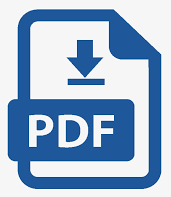Síndrome Nefrótico, un estudio de 18 años. Matanzas
Palabras clave:
SÍNDROME NEFRÓTICO, CORTICOSTEROIDES, RIÑÓN, INVESTIGACIÓN APLICADA, EPIDEMIOLOGÍA DESCRIPTIVA, ESTUDIOS TRANSVERSALES, HUMANOS, RECIÉN NACIDO, LACTANTE, PREESCOLAR, NIÑO, ADOLESCENCIAResumen
Se destaca un aumento significativo de la prevalencia de enfermedades renales crónicas en los países de América Latina, como indicador de la nueva epidemiología y del impacto de la tecnología en su determinismo. El síndrome nefrótico idiopático justifica alrededor del 90 % de los casos de nefrosis en la infancia. Con el objetivo de conocer las características clínicas y epidemiológicas en nuestra provincia, se realizó un estudio aplicado, descriptivo y retroprospectivo sobre el comportamiento del Síndrome Nefrótico Primario, donde fueron estudiados 57 pacientes desde enero de 1990 a diciembre del 2008. Se caracterizaron los casos de acuerdo a las siguientes variables demográficas: edad de debut, sexo, se identificó en primario o secundario, se clasificó a los pacientes según su respuesta al tratamiento corticoesteroideo y se conoció la evolución y complicaciones más frecuentes. Los datos obtenidos fueron procesados utilizando métodos estadísticos (tasa de incidencia, números absolutos y por ciento). Se obtuvieron los siguientes resultados: La incidencia encontrada fue 3,6 por 100,000; el 56,1% debutó entre los 3-5 años; 61,4% del sexo masculino; 92% es de tipo primario; 59,6% son corticosensibles al inicio del tratamiento; las infecciones respiratorias fue la complicación más frecuente y la principal causa de recaída. Entre los pacientes biopsiados la Glomérulo Esclerosis Segmentaria Focal (GNFS) ocupó el 12,3%, seguida de Glomérido Nefritis Mesangial Difusa con 8,8%; el 78,9% se comportó como Síndrome Nefrótico Primario con Lesiones Mínimas. Estos resultados son comparables con otros reportes, donde se plantea una incidencia de 2 por 100000 niños menores de 16 años en Norteamérica.Descargas
Cómo citar
Número
Sección
Licencia
La misma permite:
• Copiar y redistribuir el material publicado en cualquier medio o formato.
• Adaptar el contenido.
Esto se realizará bajo los siguientes términos:
• Atribuir los créditos de los autores e indicar si se realizaron cambios, en cuyo caso debe ser de forma razonable.
• Uso no comercial.
• Reconocer la revista donde se publica.
Se mantienen los derechos de autoría de cada artículo, sin restricciones.






